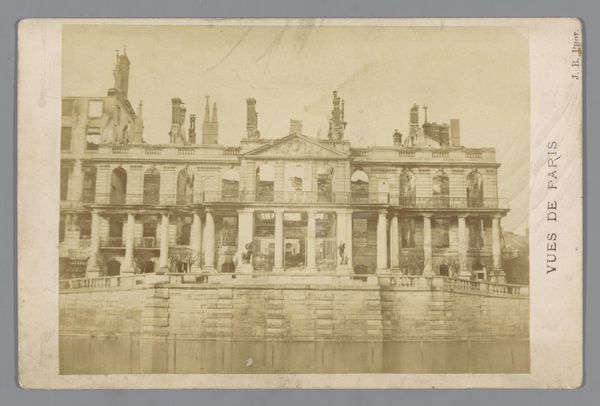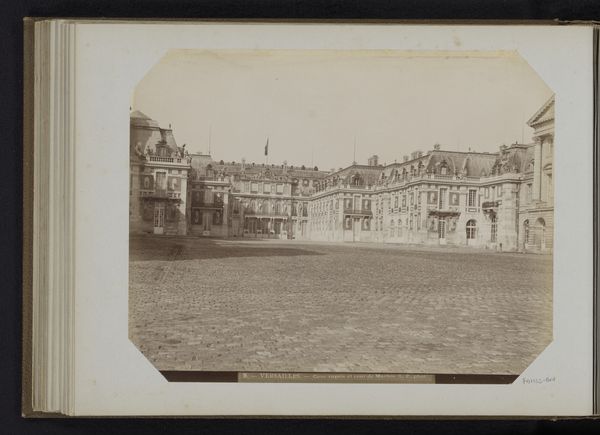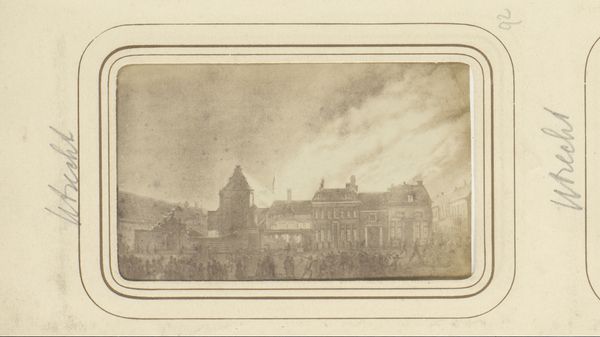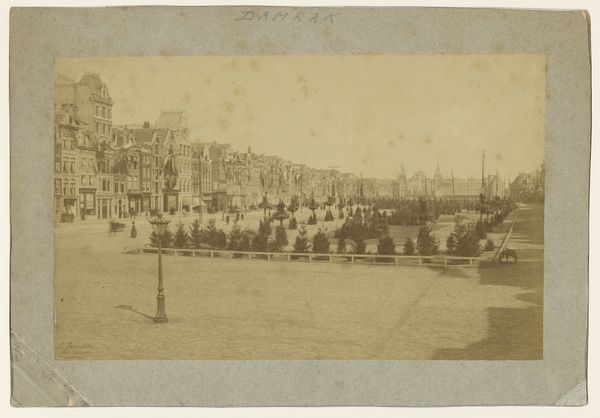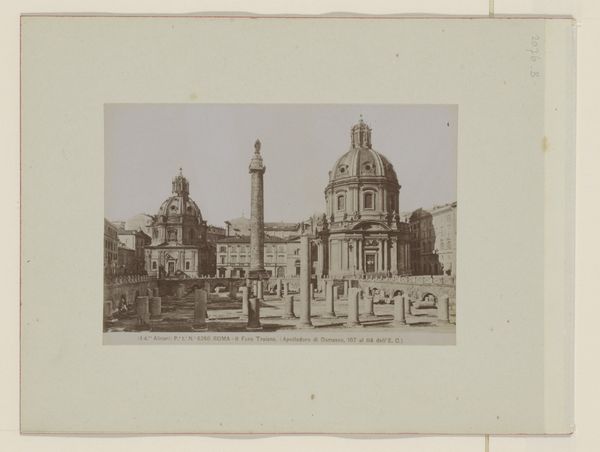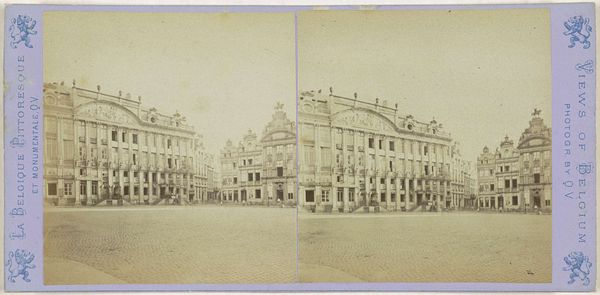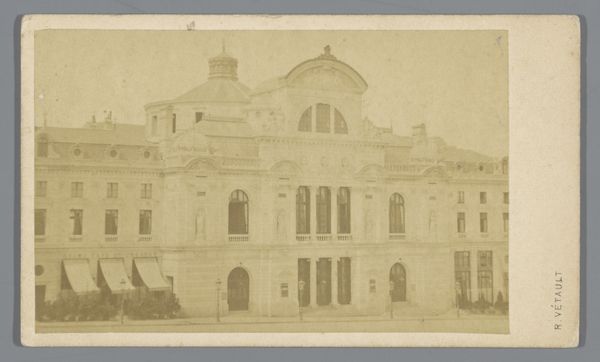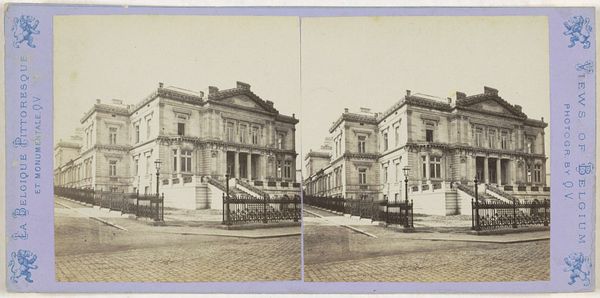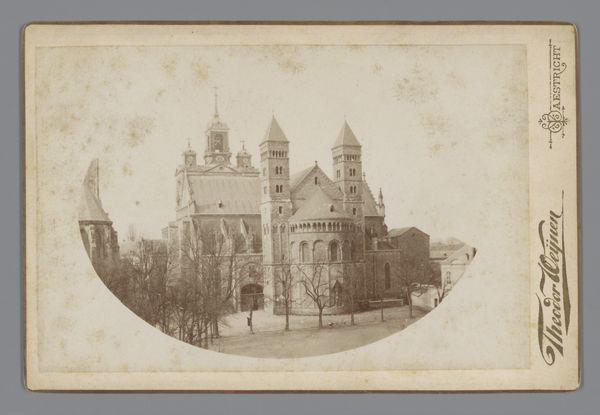
Dimensions: height 87 mm, width 176 mm
Copyright: Rijks Museum: Open Domain
Editor: This photograph, "Gezicht op het plein voor het Paleis van Versailles met standbeelden," dating roughly between 1850 and 1880, captures the palace square. There's a striking formality to it, almost sterile. The statues seem frozen, mirroring the rigid architecture. How do you interpret this photograph in terms of its historical context and what it might be saying about power and representation? Curator: That formality you observed speaks volumes. Photography at this time was often used to reinforce existing power structures. Versailles, a potent symbol of the French monarchy, is presented here in a way that emphasizes order and control. The statues aren't just decorative; they're carefully positioned to project an image of authority and grandeur. Consider how the photographer might be complicit in this, framing the image to perpetuate these ideals. What do you notice about the composition itself? Editor: I see the lines are very rigid. Everything's symmetrical and feels quite staged. There is also not much of a focus on ordinary people, giving more power to this idealized representation. Curator: Exactly. The absence of ordinary people reinforces the elite nature of the space and the values it represents. Think about the societal shifts happening at this time – burgeoning industrialization, rising class tensions. How might this image serve as a counter-narrative, a way to visually assert traditional power in the face of those challenges? Editor: So, it’s not just a picture of a pretty place; it’s a statement. It's using the emerging technology of photography to preserve an idealized image of power in a time of immense social upheaval. That's a great point about whose stories are being visually represented. Curator: Precisely. And by understanding that, we can begin to unpack the complex ways in which art and photography intersect with politics and ideology, and also start deconstructing how those traditional representations are challenged today by various new emerging artists. Editor: I hadn’t considered how directly a landscape photo could participate in a power dynamic. It's fascinating to think about representation this way. Thanks.
Comments
No comments
Be the first to comment and join the conversation on the ultimate creative platform.

